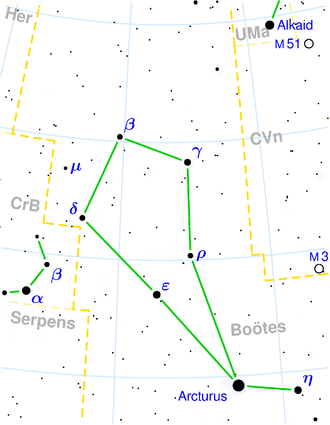NGC 5798
| Galaxy NGC 5798 |
|
|---|---|

|
|
| SDSS recording | |
| AladinLite | |
| Constellation | Bear keeper |
|
Position equinox : J2000.0 , epoch : J2000.0 |
|
| Right ascension | 14 h 57 m 38.0 s |
| declination | + 29 ° 58 ′ 07 ″ |
| Appearance | |
| Morphological type | in the |
| Brightness (visual) | 13.0 likes |
| Brightness (B-band) | 13.6 mag |
| Angular expansion | 1.4 ′ × 0.9 ′ |
| Position angle | 42 ° |
| Surface brightness | 13.1 mag / arcmin² |
| Physical data | |
| Affiliation | LGG 388 |
| Redshift | 0.005964 ± 0.000017 |
| Radial velocity | (1788 ± 5) km / s |
|
Stroke distance v rad / H 0 |
(84 ± 6) · 10 6 ly (25.7 ± 1.8) Mpc |
| history | |
| discovery | Wilhelm Herschel |
| Discovery date | May 16, 1784 |
| Catalog names | |
| NGC 5798 • UGC 9628 • PGC 53463 • CGCG 164-047 • MCG + 05-35-028 • IRAS 14555 + 3009 • 2MASX J14573796 + 2958065 • GC 4016 • H III 131 • h 1892 • | |
NGC 5798 is a 13.0 likes bright irregular galaxy with pronounced emission lines from the Hubble type in the constellation Bootes the northern sky and is estimated to be 84 million light-years from the Milky Way center.
It was discovered on May 16, 1784 by Wilhelm Herschel with an 18.7-inch reflector telescope, who described it as "vF, E, close to a star, contains two stars".
NGC 5798 group ( LGG 388 )
| Galaxy | Alternative name | Distance / million Lj |
|---|---|---|
| NGC 5798 | PGC 53463 | 84 |
| NGC 5789 | PGC 53414 | 85 |
| PGC 53317 | UGC 9597 | 82 |
